4.5.1 Pupil Satisfaction
The study used a sample of 25 pupils for testing the
satisfaction level, thus 5 students from five different private schools in
Kibera. Questions ranging from their satisfaction level on several issues were
asked to these children. Henceforth, the satisfaction questions included:
- The rate of their teacher's ability in their respective
subjects - Teachers' punctuality for lessons
- Teachers' attendance at school
- Teachers attention/ fairness to students
- The rating of English lessons
- The discipline at the school
- The rating for extra curricula activities
- The state of the schools' buildings
- The school facilities (toilets, library, drinking water,
chairs, blackboard etc...)
We equally set to analyse the pupils' tests score on English,
Mathematics and Kiswahili, the local language. The information contained in the
test scores were used to make a correlation between the level of satisfaction
and the level of achievement in their respective institutions. 13 pupils out of
25 said the teachers' ability in their subject was excellent and 12 said it was
good. In addressing the teachers' punctuality for lessons, 16 said it was
excellent while 9 said it was good. Teachers' attendance rate at school got a
positive feedback as 20 pupils thought it was excellent and 5 said it was
rather good. Concerning their fairness for students, 18 opted for an excellent
point of view while 7 said it was good.
Rating the physical aspect of their respective schools, 12
pupils said the school buildings were good, on the other side, 9 of their peer
thought the buildings are poor and 4 stated that they are very poor. Finally
the school facilities were diversely appreciated by these pupils. In fact 15
said the facilities were good, while 6 of them argued that they were poor and 4
said they were very poor.
From a general perspective, the pupils expressed their
overwhelming satisfaction over most of the issues as the figures displayed
below present. According to these pupils, the teachers in private schools in
Kibera are very committed to teaching them. The teachers all possess a mastery
of subject matter, are very punctual for their lessons and treat their students
fairly this to the greatest satisfaction of the pupils. However two negative
responses emerged from their opinions. These same students gave various
appreciations while rating their respective school buildings and facilities.
Though few students think the infrastructures and facilities are good, others
rate these as «poor» or «very poor» for the rest .
Although no standardised test was set for the purpose of this
research, the pupils' test scores in three subjects were gathered from the
school authorities portray an overall good performance in English, Mathematics,
and Kiswahili .The highest score for the 12 pupils who rated their English
lessons as good is 70/100 while this same score is 90/100 for the 10 pupils who
rated the same lesson as Excellent (see figure 18).The pupils were asked to
rate their own level of Maths. 7 of them said their level was excellent, 10
said it was good, and 5 said it was poor. The correlation of these ratings with
their tests scores however reveals that student 13 of Future Kids Academy who
actually thought his level of Maths was excellent seem to be doing very bad. On
the contrary of student 23 of River of Life Primary school, whose results shows
that he is actually doing well on the subject while he thought his performance
was rather poor (see figure 19).Out of the five sample schools were these
scores were collected, the Amaf school has the best performance on English test
scores while St Christine has the lowest performance. Student 6 of St Michael
particularly distinguishes himself as he emerges as one of the best of his
school on this subject while the overall scores in his school are relatively
good (See figure 20). On Kiswahili, the local language, that Amaf schools once
more emerge with the best test scores comprised between 90/100 and above. Again
here St Christine's performance is the lowest from a general point of view (see
figure 21).
This information is to attest that in spite of the poor state
of the schools buildings, the inner environment seems to be conducive for
effective learning/teaching to take place. At the end of the day, apart from
the perpetual complaints of school buildings and facilities, (which we must
admit is common to most under developed countries educational systems private
or public) it is safe to conclude that to an extent, the pupils attending
private schools in Kibera are satisfied with the entrepreneurs' investments.
Figure 12 - The Rating of the Class teacher's ability in
their subject
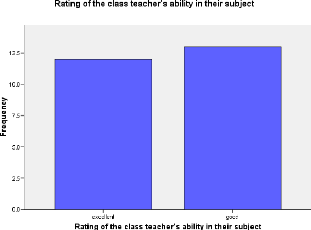
Figure 13 - The rating of the teacher's punctuality for
lessons
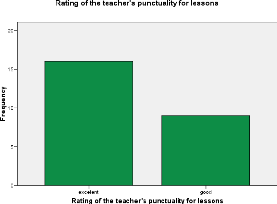
Figure 14 - The rating of the teacher's attendance at
school

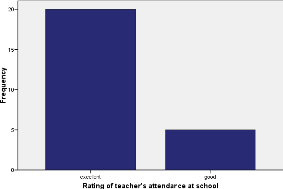
Figure 15: Teachers' fairness for students
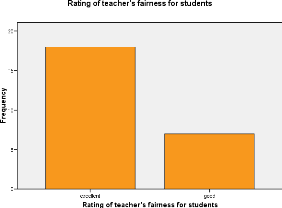
Figure 16 - The Rating of the school
buildings
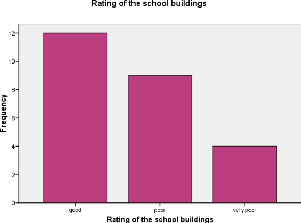
Figure 17- Rating of the school facilities
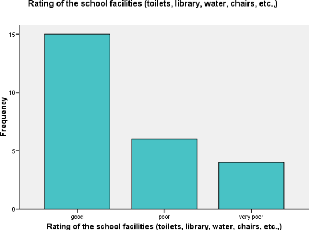
Figure 18 - Rating of English lessons correlated with
English scores
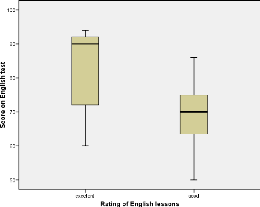
Figure 19- Rating of maths and maths scores
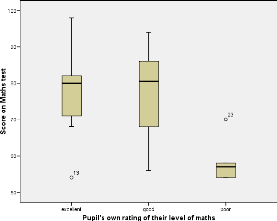
Figure 20 - English results by school
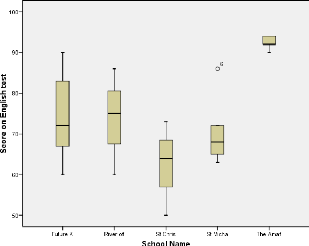
Figure 21 - Kiswahili means plot by school
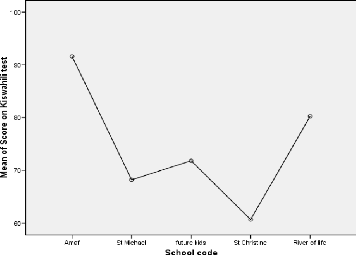
| 

